#james webb first full colour image
Text
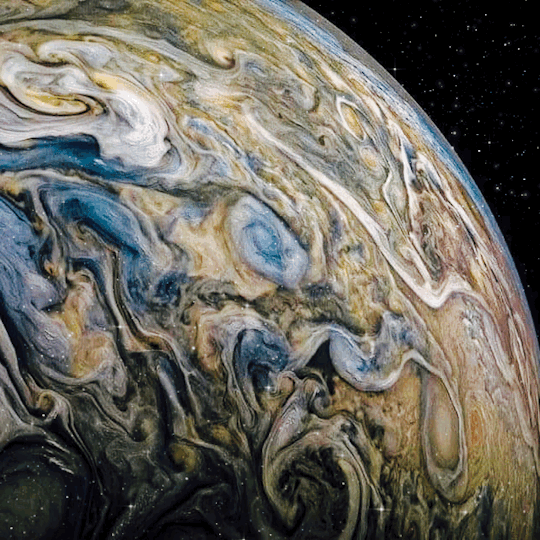

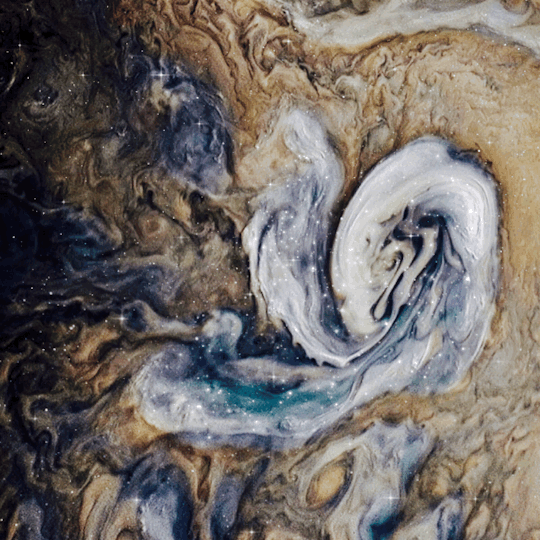
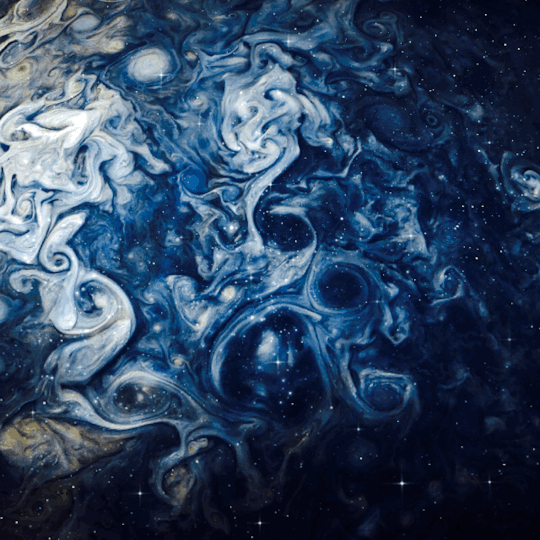
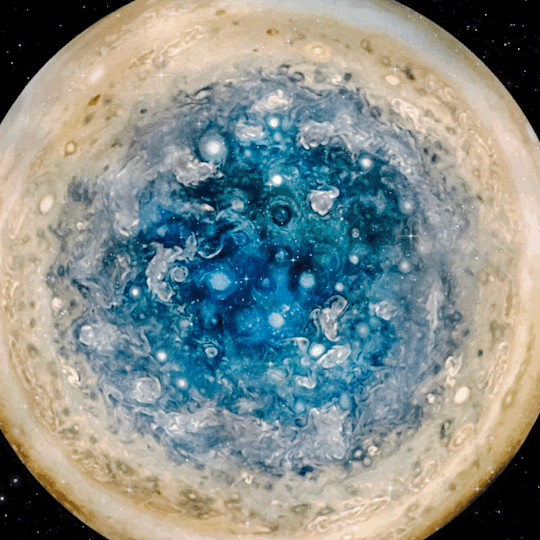

✨The Beauty of Jupiter ✨
#gifs (edits) made by me :)#assassin1513#space#space vibes#space aesthetic#jupiter#planet#planets#james webb#james webb first full colour image#james webb space telescope#james webb update#james webb deepest sharpest view of universe#webb#james webb telescope#james webb images#solar system#astrology#astronomy#nasa#beyond the stars#stars#infinity#jupiter planet#glitter#outer space#void#space art#magic#vincent van gogh
52K notes
·
View notes
Text

Hubble and James Webb comparison.
Hubble space telescope can see back to 13.5 billion years, around when the modern galaxies were formed and the Big Bang happened 13.8 billion years ago. With the JAMES WEBB telescope we can peer into an unseen time period in the universe- back to when the first galaxies, the first black holes and the first stars came into existence.
James Webb telescope is as close as we ever got to understand the Big Bang!!!!!
This is Amazing.
#nasa#astronomy#galaxy#space#james webb telescope#james webb images#james webb space telescope#james webb update#universe#science#astrophotography#cosmos#jwst#physics#planets#stars#black hole#james webb first full colour image#james webb deepest sharpest view of universe#james webb 5 points on what new telescope aims to achieve james webb#webb telescope#nebula#amazing#scientific#tags dont work#telescope#astrophysics#space science#hubble#hubble telescope
684 notes
·
View notes
Text

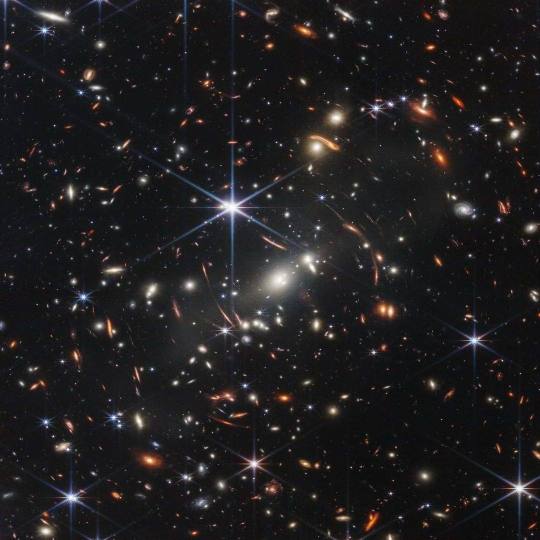
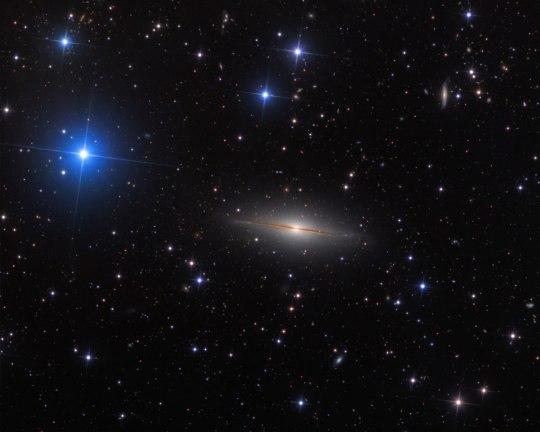
#fyppage#darkness#late night#night sky#darkcore#galaxy#outer space#planet#stars#dark space#dark hole#cosmic wonders#cosmos#space vibes#space aesthetic#james webb first full colour image#james webb telescope#james webb space telescope#james webb deepest sharpest view of universe#nasa#astrology#astronomy#astronaut#solar system#beyond the stars#james webb update#james webb images#space images#void#space art
266 notes
·
View notes
Text
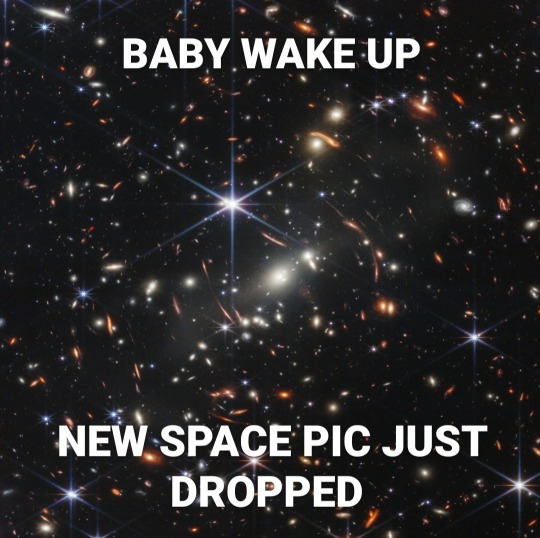
okay NASA release the alien pics now
392 notes
·
View notes
Text

27/07/2022
the James Webb telescope returned some pretty tigeriffic results...!
#tiger intern t#daily tiger#digital media#james webb images#james webb telescope#james webb space telescope#james webb first full colour image#james webb photos#space tiger#galaxy tiger#space art#huion kamvas
57 notes
·
View notes
Text
James Webb Space Telescope First Images
12th July 2022 marks one of the most important days in the history of mankind. James Webb Space Telescope revealed its first images and I am at a loss for words. This blog is more than a way to share information but is a thanks to all the scientists, engineers, ad everyone else on the Webb team and a way to congratulate the entire scientific community and human kind as this marks a major step in unravelling the universe. Now I know that mine is an aerospace page but this one is going to have an astrophysics and astronomy side to it. If you want to read about the engineering behind the JWST the do read-( https://www.tumblr.com/blog/view/aerospace-anant/672455873494384640?source=share)
SMACS 0723

NASA’s James Webb Space Telescope has delivered the deepest and sharpest infrared image of the distant universe so far. Webb’s First Deep Field is galaxy cluster SMACS 0723, and it is teeming with thousands of galaxies – including the faintest objects ever observed in the infrared. Webb’s image is approximately the size of a grain of sand held at arm’s length, a tiny sliver of the vast universe. The combined mass of this galaxy cluster acts as a gravitational lens, magnifying more distant galaxies, including some seen when the universe was less than a billion years old. Einstein’s general theory of relativity describes how mass concentrations distort the space around them.
A gravitational lens can occur when a huge amount of matter, like a cluster of galaxies, creates a gravitational field that distorts and magnifies the light from distant galaxies that are behind it but in the same line of sight. The effect is like looking through a giant magnifying glass. It allows researchers to study the details of early galaxies too far away to be seen with current technology and telescopes.
It is a composite made from images at different wavelengths, totalling 12.5 hours using the NIRcam – achieving depths at infrared wavelengths beyond the Hubble Space Telescope’s deepest fields, which took weeks.
This image shows the galaxy cluster SMACS 0723 as it appeared 4.6 billion years ago, with many more galaxies in front of and behind the cluster. We are looking back in time to within a billion years after the big bang when viewing the youngest galaxies in this field. The light was stretched by the expansion of the universe to infrared wavelengths that Webb was designed to observe. Other features include the prominent arcs in this field. The powerful gravitational field of a galaxy cluster can bend the light rays from more distant galaxies behind it, just as a magnifying glass bends and warps images.
2. WASP-96b
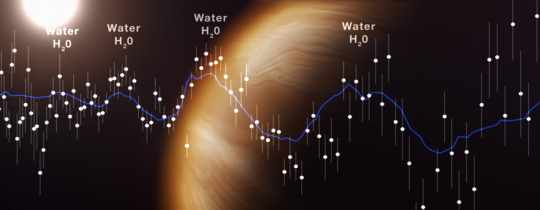
With a mass less than half that of Jupiter and a diameter 1.2 times greater, WASP-96 b is much puffier than any planet orbiting our Sun. And with a temperature greater than 1000°F, it is significantly hotter. WASP-96 b orbits extremely close to its Sun-like star, just one-ninth of the distance between Mercury and the Sun, completing one circuit every 3½ Earth-days. The combination of large size, short orbital period, puffy atmosphere, and lack of contaminating light from objects nearby in the sky makes WASP-96 b an ideal target for atmospheric observations. The observation, reveals the presence of specific gas molecules based on tiny decreases in the brightness of precise colours of light, is the most detailed of its kind to date, demonstrating Webb’s unprecedented ability to analyse atmospheres hundreds of light-years away. On June 21, Webb’s NIRISS measured light from the WASP-96 system for 6.4 hours as the planet moved across the star. The result is a light curve showing the overall dimming of starlight during the transit, and a transmission spectrum revealing the brightness change of individual wavelengths of infrared light between 0.6 and 2.8 microns.
While the light curve confirms properties of the planet that had already been determined from other observations – the existence, size, and orbit of the planet – the transmission spectrum reveals previously hidden details of the atmosphere: the unambiguous signature of water, indications of haze, and evidence of clouds that were thought not to exist based on prior observations.
3. STEPHENS QUINTET

Stephan’s Quintet, a visual grouping of five galaxies. This enormous mosaic is Webb’s largest image to date, covering about one-fifth of the Moon’s diameter. It contains over 150 million pixels and is constructed from almost 1,000 separate image files. With its powerful, infrared vision and extremely high spatial resolution, Webb shows never-before-seen details in this galaxy group. Sparkling clusters of millions of young stars and starburst regions of fresh star birth grace the image. Sweeping tails of gas, dust and stars are being pulled from several of the galaxies due to gravitational interactions. Most dramatically, Webb captures huge shock waves as one of the galaxies, NGC 7318B, smashes through the cluster. Tight groups like this may have been more common in the early universe when their superheated, infalling material may have fuelled very energetic black holes called quasars. Even today, the topmost galaxy in the group – NGC 7319 – harbours an active galactic universe, a supermassive black hole 24 million times the mass of the Sun. It is actively pulling in material and puts out light energy equivalent to 40 billion Suns. In NGC 7320, the leftmost and closest galaxy in the visual grouping, Webb was able to resolve individual stars and even the galaxy’s bright core. it will help scientists understand the rate at which supermassive black holes feed and grow. Webb also sees star-forming regions much more directly, and it is able to examine emission from the dust – a level of detail impossible to obtain until now.
4. SOUTHERN RING NEBULA

Two cameras aboard Webb captured the latest image of this planetary nebula, catalogued as NGC 3132, and known informally as the Southern Ring Nebula. It is approximately 2,500 light-years away. The dimmer star at the centre of this scene has been sending out rings of gas and dust for thousands of years in all directions, and NASA’s James Webb Space Telescope has revealed for the first time that this star is cloaked in dust. This observation shows the Southern Ring Nebula almost face-on, but if we could rotate it to view it edge-on, its three-dimensional shape would more clearly look like two bowls placed together at the bottom, opening away from one another with a large hole at the center.
Two stars, which are locked in a tight orbit, shape the local landscape. Webb's infrared images feature new details in this complex system. The stars – and their layers of light – are prominent in the image from Webb’s NIRCam on the left, while the image from Webb’s MIRI on the right shows for the first time that the second star is surrounded by dust. The brighter star is in an earlier stage of its stellar evolution and will probably eject its own planetary nebula in the future.
In the meantime, the brighter star influences the nebula’s appearance. As the pair continues to orbit one another, they “stir the pot” of gas and dust, causing asymmetrical patterns.
Each shell represents an episode where the fainter star lost some of its mass. The widest shells of gas toward the outer areas of the image were ejected earlier. Those closest to the star are the most recent. Tracing these ejections allows researchers to look into the history of the system.
As the star ejects shells of material, dust and molecules form within them – changing the landscape even as the star continues to expel material. This dust will eventually enrich the areas around it, expanding into what’s known as the interstellar medium. And since it’s very long-lived, the dust may end up traveling through space for billions of years and become incorporated into a new star or planet.
5. CARINA NEBULA

This landscape of “mountains” and “valleys” speckled with glittering stars is actually the edge of a nearby, young, star-forming region called NGC 3324 in the Carina Nebula. Captured in infrared light by NASA’s new James Webb Space Telescope, this image reveals for the first time previously invisible areas of star birth. Called the Cosmic Cliffs, Webb’s seemingly three-dimensional picture looks like craggy mountains on a moonlit evening. In reality, it is the edge of the giant, gaseous cavity within NGC 3324, and the tallest “peaks” in this image are about 7 light-years high. The cavernous area has been carved from the nebula by the intense ultraviolet radiation and stellar winds from extremely massive, hot, young stars located in the center of the bubble, above the area shown in this image.
The blistering, ultraviolet radiation from the young stars is sculpting the nebula’s wall by slowly eroding it away. Dramatic pillars tower above the glowing wall of gas, resisting this radiation. The “steam” that appears to rise from the celestial “mountains” is actually hot, ionized gas and hot dust streaming away from the nebula due to the relentless radiation. Because of Webb’s sensitivity to infrared light, it can peer through cosmic dust to see these objects. Protostellar jets, which emerge clearly in this image, shoot out from some of these young stars. The youngest sources appear as red dots in the dark, dusty region of the cloud. Objects in the earliest, rapid phases of star formation are difficult to capture, but Webb’s extreme sensitivity, spatial resolution, and imaging capability can chronicle these elusive events.
These observations of NGC 3324 will shed light on the process of star formation. Star birth propagates over time, triggered by the expansion of the eroding cavity. As the bright, ionized rim moves into the nebula, it slowly pushes into the gas and dust. If the rim encounters any unstable material, the increased pressure will trigger the material to collapse and form new stars.
BIBLIOGRAPHY:
1. https://www.nasa.gov/webbfirstimages
2. https://webbtelescope.org/contents/news-releases/2022/news-2022-031
3. https://webbtelescope.org/glossary.html#h3-CK-2572b869-1584-45c0-a18b-0c5ffcf32e57
4. https://esawebb.org/announcements/ann2207/
5. https://hubblesite.org/contents/articles/gravitational-lensing
#james webb first full colour image#physics#science#aerospace#space#tech#james webb space telescope#james webb 5 points on what new telescope aims to achieve james webb#james webb deepest sharpest view of universe#nasa#carina nebula#astronomy#webb#jwst#images#first images
13 notes
·
View notes
Text
The first images from the JWST- UGH 🥰🥰😍😍The James Webb Telescope is a Fucking spectacular piece of engineering. It’s literally insane. The fact it went off without a hitch when it had hundreds of points of failure that could happen is insane as well, but the engineering of it’s components are just mind blowing. From Cryogenic Polishing of the Mirrors, the fact the actuators can move the mirrors as low as 10 nanometers (about 1/10,000th of the width of a human hair), cryogenic cooling of the telescope and the infrared technology- it can detect such low light levels at about 1 photon per second, it can detect the warmth of a bee flying around on the moon and just sooooo much more. I’m so exited to see all the images and discoveries in its first year of operations Omg
#mine#me#personal#my post#my life#myself#james webb#JWST#james webb telescope#james webb first full colour image#james webb images#universe#galaxy#astrophysics#astronomy#engineering#stars#telescope#hubble#cryogenics
13 notes
·
View notes
Text
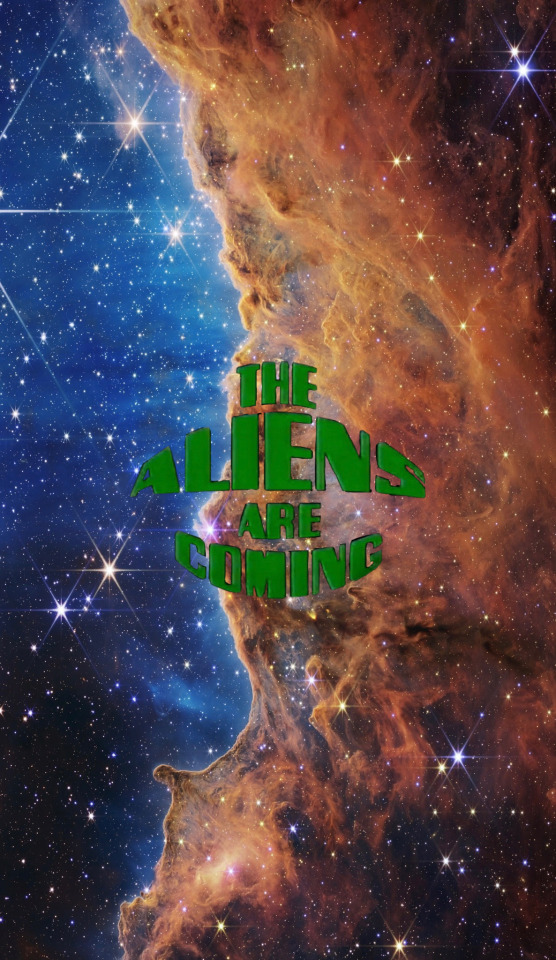
made a new phone wallpaper for myself so I can look at it all the time🤩🤩🤩
#it’s just sooo fucking beautiful#reminds me of never ending story???#like I can’t even believe what’s out there#🥲🥹#space#jwst#james webb space telescope#aliens#galaxies#james webb first full colour image#nasa
6 notes
·
View notes
Text
James Webb: 5 Points On What New Telescope Aims To Achieve
James Webb: 5 Points On What New Telescope Aims To Achieve
The James Webb space telescope has a huge task at hand – to replace Hubble which has been serving as our eye in the sky for decades. The first image released by the new telescope on Monday did not disappoint. It showed the clearest image to date of the early universe, going back 13 billion years. American space agency NASA, which launched the telescope in space in December last year, has promised…

View On WordPress
#hubble#james webb 5 points on what new telescope aims to achieve james webb#james webb first full colour image#james webb space telescope#nasa
4 notes
·
View notes
Text
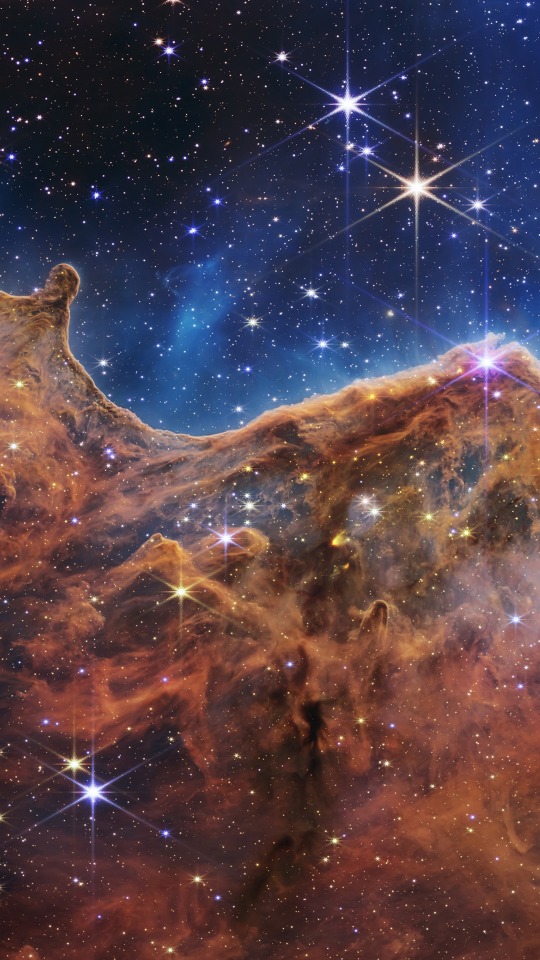
Fav phone wallpaper😍✨
4 notes
·
View notes
Text
unrelated to anything else in my life. but i don’t get along with my dad me and that mf we just don’t click. in grade nine i went to take your kid to work day with him because fr id spent wayyyy too much time in my moms office as a kid and i wasn’t interested in spending my day like that. my sister went with my dad they year previous and told me it’s chill, there’s no formal schedule and she just hung out in his cubicle all day. i was like nice i’ll do that. plus his office at the time had money and christmas parties were always a lot of fun so i was fine with it. but they’d actually developed a program that we had to participate in and i was so bored 😭 i was like…idgaf about any of this shit i’m just trying to not go to school LOL i was planning on reading & surfing my ipod touch 1st gen…. anyways i was not paying any attention lol. and i kept hearing terms like “hubble” and “canadian arm” and i was just like…yawn. at the end of the day my dad was like so?? did you learn anything??? and i was like i gotta be honest with u chief i was high key dozing now let’s blow this joint. he was annoyed and honestly that might be the one thing he’s ever been right about fr i was not on form lol. anyways in our little loot bag thing we got stickers and one was this big ugly ass contraption that said “james webb” and i was like who tf is that his shit is ugly as hell and i think i just slapped it on my science binder bc i cant waste a sticker. NOWWW i’m seeing all these images & putting two and two together…my mom told me ages ago that she and my dad stayed up really late on christmas to watch the launch of “something your dad worked on” and i was like oh word ya. and my brain 🧠 is adding it all up LOOOLLLL i’m so STUPIDDD like.. i just googled my dads company and it says plain as day. these two parts were built in (where i’m from) by (dads employer) etc. 😭 i gotta say……..i was built so different from my parents like seriously … like i said my dad was just. absolutely befuddled and bewildered as to why i wasn’t interested and it’s been like 13 years and i’m just now going uhhhhh wow damn that’s actually uhhh fuckin cool. and he was right
#anyways.#james webb#nasa#hubble#james webb first full colour image#dadposting#we square now bruh 🫱🏼🫲🏽#my bad tho
4 notes
·
View notes
Text
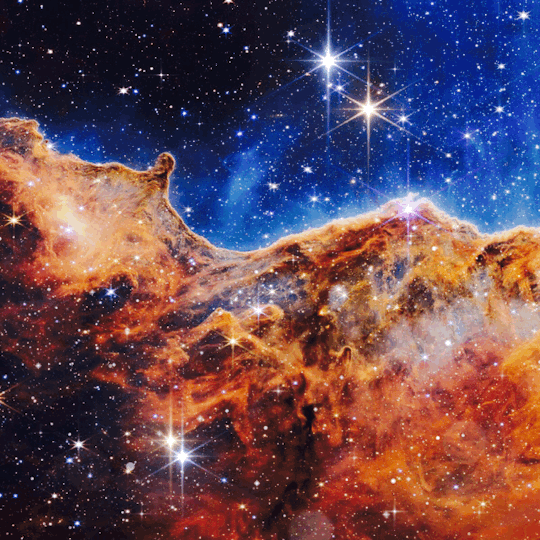



✨James Webb Beauty ✨
#gifs (edits) made by me :)#james webb telescope#james webb images#james webb update#james webb space telescope#james webb first full colour image#james webb deepest sharpest view of universe#james webb#nasa#space#space aesthetic#space vibes#galaxy#astronomy#astrology#stars#star#beyond the stars#void#to infinity and beyond#star cluster#nebula#infinity#outer space#webb#cosmos#universe#the universe#magic#glitter
11K notes
·
View notes
Text

Jupiter, and its moon Europa, left, are seen through Webb’s NIRCam instrument 2.12 micron filter
James Webb telescope.
Image credits: @nasa
#space#spacex#galaxies#black holes#outer space#galaxy#jupiter#moon#james webb space telescope#jwst#nasa james webb telescope first image joe biden full color jwst space nasa#james webb images#james webb telescope#james webb first full colour image#planets#planet
243 notes
·
View notes
Text
half asleep and tearing up over space photos?? surely not me
2 notes
·
View notes
Text
JAMES WEBB telescope.
The first time I heard about this huge project is from The Hindu. An article about how space organizations are breaking the notions of borders and nationality and paving way for us Humans to think and act as a Species. The development of this space telescope is not a simple feat and couldn’t be possible by NASA alone. ESA, CSA, NASA, and other Universities worked in collaboration for years that finally culminated in the wholesome images that we see today.
The space Telescope was in the news for other reasons too. This had nothing to do with Science. It was about the legacy that the name would create. James Webb is a legend for NASA. He was phenomenal but he was homophobic too. That side of him created the controversy. Across the world, people are breaking down images of historical figures, bringing them down from their glorified images and making them accountable for their evil deeds even though they are dead. But controversy ended as NASA was clear that the evidence put forward against James Webb wasn’t enough.
This side of the discussion is important and clearly needs a space even though it's not actually related to SPACE.
The world is in a frenzy now. As it should be. The excitement is positive. Relativity, Quantum Mechanics are not subjects that the commoner can grasp( that includes me). Everything is interesting but it's difficult to understand the math behind it. To properly understand, comprehend, evaluate and maybe add something, one needs to learn the language of the scientific gods- math. But books, Youtube, popular culture ( that includes Interstellar and if u r a diehard marvel fan, end game too) has helped us folks to think outside the box, understand some of the theories and their implications. Basically the fundamental aim that drives us human beings is the search for knowledge to have a complete understanding of the universe, how and why it exists.( when is an important question too) So it's in the genes of everyone literate, religious, liberal, or conservative to want to what how things came to be as it is now. (even though math stands in the way).
I don’t understand time well. The smartest minds are trying to figure it out too, so no shame there. It can be called as a human concept to keep track of events. In fact time is considered to be a dimension. It's also a measurement and it flows in one direction only.( at least in the macro scale). Time can be represented by clocks and calendars ( not like the spatial dimensions) and it is ever present in our languages. We grew up in a world which measures time and has linguistic structures that relate time and space. But there are tribes in this world who don’t have the same abstract idea about time like the Amondawa tribe in the Amazon. They don’t have the linguistic equivalent of time. They don’t have calendars or clocks and don’t measure their age. It's truly remarkable if u think about it. Probably they don’t wonder about the year they were born and think ' what have I done so far?" The anxiety associated with the passage of time is tremendous and there's no escape from it. But maybe in time as our understanding of 'time' changes this will change too. I can be in a state of zen or ignorance like my cat is.
To be continued ..
#james webb update#james webb first full colour image#james webb space telescope#spaceporn#outer space#safe space#common man#simpleton
2 notes
·
View notes
Photo



(via James Webb Space Telescope Framed Art Print by DjoooDjooo)
#findyourthing#redbubble#james webb photos#james webb space telescope#james webb images#james webb first full colour image#nasa webb telescope
1 note
·
View note